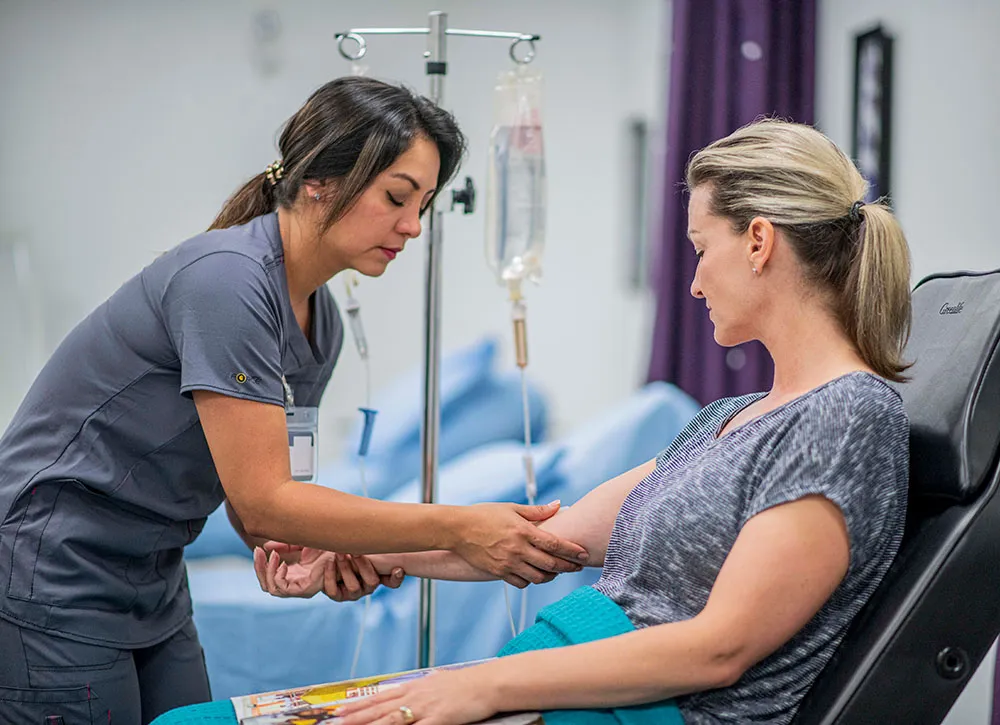Medical Treatment

Treatment for Myasthenia Gravis (MG) begins with first-line medications like Mestinon for symptom relief or Prednisone to suppress the immune system. If these are not enough, other drugs or even surgery to remove the thymus gland may be recommended. In emergencies, rapid hospital treatments are available. The goal is to find a unique combination of therapies that allows most patients to live full lives.
First-line Medications
When you receive an MG diagnosis, there will almost always be medical treatment recommended. The most common medicine prescribed is Mestinon (pyridostigmine). This is an acetylcholinesterase inhibitor and works by preventing the breakdown of acetylcholine, the critical neurotransmitter that helps your nerves communicate with your muscles. While not a cure, Mestinon may make daily activities more manageable by enhancing the signals between your nerves and muscles, essentially turning up the volume on commands telling your muscles to contract.
For many patients, Mestinon is all that is required. Within a few hours of receiving your first dose, your MG symptoms may be greatly reduced, with a noticeable improvement in muscle strength and a reduction in muscle fatigue. Of course, results vary patient-by-patient, and unfortunately some patients do not experience any relief at all from Mestinon.
Another commonly prescribed medicine for MG patients is Prednisone, which is a corticosteroid. This drug is a steroid and works by reducing your immune system’s attack on acetylcholine receptors, addressing the root cause rather than just managing symptoms. While Mestinon rarely has significant side effects, long term use of Prednisone may have unwanted side effects, including weight gain, bone loss, and increased risk of infections. Unlike Mestinon, which in some has an almost immediate effect, patients taking Prednisone may not see any improvement for a few weeks or sometimes even months.
Usually, one of these two first-line medications will result in a reduction of symptoms for MG patients, either alone or in tandem. However, in some cases neither drug is successful or suitable, and other medical treatments prove necessary.
When More Help is Needed
For some MG patients, Mestinon and Prednisone provide excellent symptom control. Unfortunately, for many, additional medications are necessary. This does not mean your MG is more severe or that you are doing anything wrong—it simply means your body needs a different approach to get the best results. Everyone is different. Here are other medications that your doctor may prescribe.
Imuran (azathioprine) is probably the most commonly prescribed “add-on” medication for MG patients. It works by calming down the parts of your immune system that are creating the problematic antibodies. This medicine is a “marathon runner,” not a “sprinter.” While Mestinon might help you feel better within hours, Imuran typically takes 4-6 months to show its benefits. This can be frustrating when you are hoping for relief, but many patients find it is worth the wait. Your doctor will want to check your blood work regularly to make sure Imuran is not harming your liver or lowering your infection-fighting white blood cells too much.
CellCept (mycophenolate mofetil) is another option. It works similarly to Imuran and is sometimes prescribed when Imuran is not well-tolerated or does not help. Like Imuran, patience is required—it takes months to see the full effect.
Surgery: Removing the Thymus Gland
In many MG patients, their thymus gland does not function the way it should and removing it surgically can lead to significant improvement in symptoms. (Your thymus gland sits behind your breastbone and, like your tonsils and your spleen, normally helps your immune system develop properly.)
If you have a tumour on your thymus gland — about 10-15% of MG patients do — surgery is strongly recommended. But even without a tumour, your doctor might suggest this procedure, particularly if you are younger than 65 or have MG symptoms throughout your body rather than just in your eyes.
Again, improvement may take many months or even years after having your thymus gland removed; once again, it is a marathon, not a sprint.
Emergency Treatments
Sometimes MG can flare up suddenly and severely, requiring immediate medical attention. Two main treatments can provide rapid relief in these situations: plasmapheresis and IVIG. Plasmapheresis is a treatment that quickly removes harmful antibodies from your blood that are causing muscle weakness. It’s like a blood-cleaning process, and can help you feel stronger during a crisis. IVIG is a treatment where helpful antibodies from donated blood are given to you through an IV in an effort to block the harmful antibodies causing your muscle weakness. Both work relatively quickly but are typically reserved for serious situations because they are intensive treatments that need to be done in a hospital setting.
The Bottom Line
Every MG patient’s journey is different, and what works beautifully for one person might not be the right fit for another. The key is working closely with your healthcare team, being patient with treatments that take time to work, and staying hopeful. With today’s treatment options, most people with MG can find a combination that allows them to live full, active lives.
